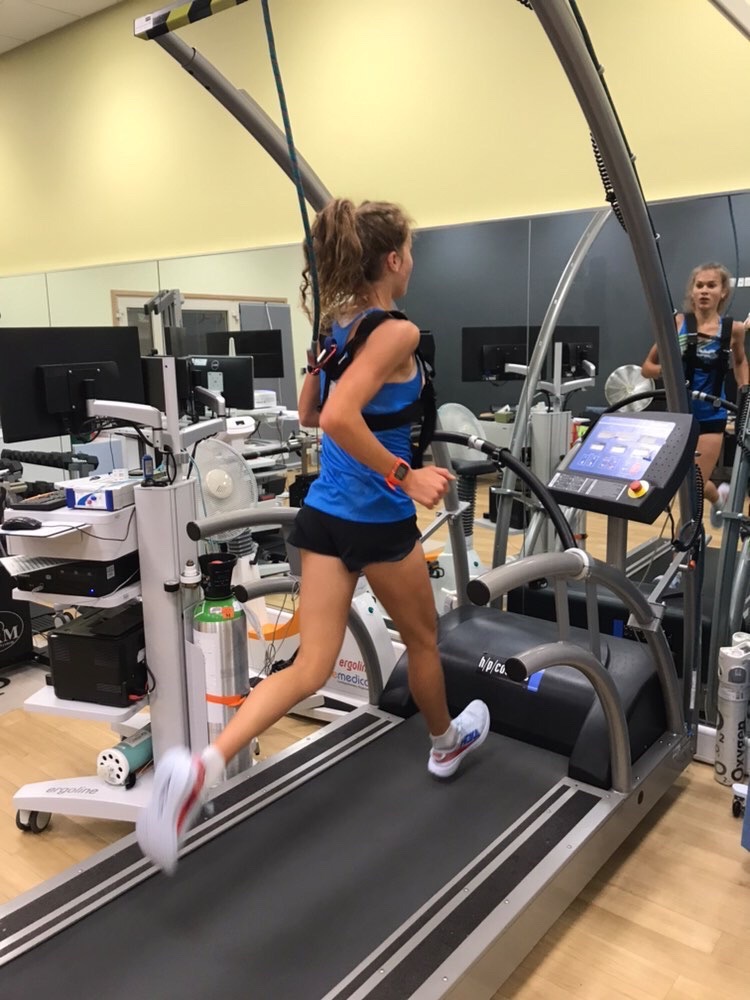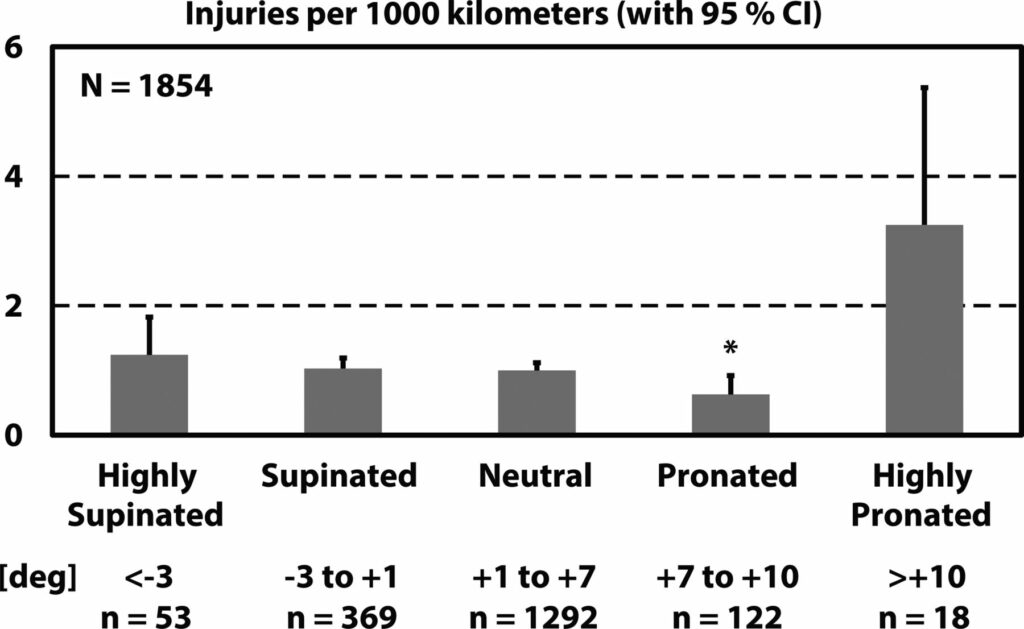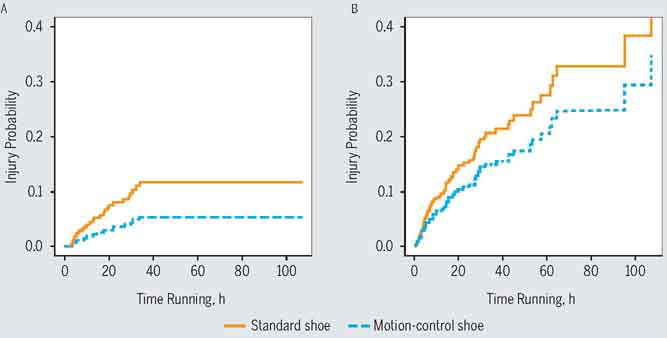Have you listened to all seven episodes of the Science of Performance podcast that Freetrail partnered with BOA on? Hosted by BOA’s Senior Director of Partner Product Design, Dan Feeney PhD, the Science of Performance podcast explores the science that drives us up hills and down trails. Inspired by Episode 3: The Mechanics in Biomechanics, this article dives deeper into the intersection between footwear, running injuries, and biomechanics – and will equip you with actionable advice for choosing your next running shoe.
Demystifying pronation and supination
Ever had your gait analyzed only to be confused by all the jargon? Or perhaps you’ve been reading a shoe review only to be lost when they start talking about how the shoe may help your pronation or supination, your high arches or collapsed arches? Or what about shoes that supposedly control foot movement – can they actually lead to better running form?
Head into your local running specialty store and there’s a good chance the team will offer to take video of you running on a treadmill and provide feedback on how your feet do or do not move. Unfortunately, and, as a former gait-analyzer working in running retail myself, gait analyses like these are often poorly evaluated and can be sources of misinformation.
Pronation, synonymous with collapsed arches, is the inwards rotation of the foot, whereas supination describes the outward rotation of the foot above the ground, linked with high arches. Both movement patterns are easy to identify when you slow down a video of someone running, but, believe it or not, they should not be viewed as “dirty words”!

Contrary to popular belief, rotation of the foot is a good thing and a sign of adequate range of motion through the lower extremities. Efficient running is characterized by feet that roll through the gait cycle as they absorb energy upon foot strike and release it on toe off. Landing on and launching off of different surfaces and terrains requires different movements of the foot: naturally, runners on technical trails likely pronate more than those running on a consistent, flat road. Additionally, every body is unique, and individual anatomical and biomechanical differences also influence foot rotation: there is no one size fits all as far as gait and pronation are concerned.
Like most things in life, more is not always better, and yes, exhibiting excessive pronation or supination may – and yes, I said “may” – be problematic, especially when coupled with improper movements through the ankle, knee, and hip joints. The reason for this is that excessive pronation often correlates with restricted supination and vice versa. As trail runners, a variety of foot movement patterns is important so that your body can adapt to its most efficient form for the given terrain. These extremes of foot rotation have also been correlated with certain injuries, particularly to the Achilles tendon, posterior tibialis, and plantar fascia (more on this later).
It comes as no surprise to hear that the marketing interests of shoe companies are not at one with the research and their customer-base of runners. For decades, brands and running specialty stores have over-hyped this relationship between excessive pronation, what they termed “over-pronation”, and supination with injuries. Often recommending motion-control or stability shoes to every-other-runner on the premise that it’s the rolling of their feet as the root cause of their pains and injuries. Failing once more to realize that foot rotation is a normal part of the gait cycle, and there is no correct foot movement for all situations. The best running form is flexible and adaptable to the situation, so attempting to control rotation with footwear may actually be a recipe for further disaster and injury.
How do shoes factor in?
Running shoes are commonly categorized as either “neutral” or “stability / motion-control” based on a shoe’s structure, level of support, and intended use: minimalist, neutral shoes sit on one end of the spectrum, and highly supportive, motion-control shoes on the other. Historically, motion-control shoes have been recommended to runners exhibiting moderate to high pronation or supination. Remember, moderate pronation is considered a normal part of the gait cycle, so if you’ve had your gait analyzed in a running specialty store, chances are that a stability or motion-control shoe has been offered to you. Perhaps, incorrectly.
Given what we now know about the normal rotations of the foot, the expected pronation and supination patterns, it’s time to question whether we should be trying to control these movements with footwear.
Understanding motion-control shoes
Traditionally, motion-control shoes have been designed with denser foams, posting or guide rails, rockers, heel pitches and wedges to prevent excessive inward or outward rolling of the foot. Today, as the term “motion-control” is being phased out and replaced by “stability”, so too are the rigid guide rails and rear-foot posting. Instead, the focus is shifting to shoe geometry and sole flare, creating footwear with a wider platform for the foot to land on and absorb impact.
As well as a wider base, stability shoes tend to be heavier and firmer underfoot compared to neutral running shoes due to their denser midsole foams and supportive features like guide rails, posting, and heel flares.
Are stability shoes right for you?
Perhaps! (Or our favorite academic answer, it depends.)
Speaking as someone who worked in a shoe shop for years, running specialty stores have good intentions, but their end goal remains to sell shoes. Unfortunately, the majority of staff carrying out gait analyses are not experts in how to interpret the data, nor are they up-to-date on the latest sports science research.
So when choosing your next running shoe, be open to trying both neutral and stability shoes, as well as the more hybrid stable-neutral shoes, and let comfort guide you instead. Don’t live or die by a certain type of stability, even if this goes against the recommendations of shoe store staff. Whether looking to optimize performance, avoid injuries, or both, the latest science suggests shoe comfort should be the priority. There really is no one shoe or blanket recommendation for every runner, but your perfect running shoe has to be comfortable!
A 2015 study titled “Running shoes and running injuries: Mythbusting and a proposal for two new paradigms: ‘Preferred movement path’ and ‘comfort filter’” proposed runners use their own comfort filter when selecting a shoe: uncomfortable shoes may result in runners moving in unnatural and harmful ways that contribute to injuries. Put simply, trust your gut and pick a shoe that feels good to you!
Running shoes and injuries
The caveat here is in the case of the repeatedly injured runner, due to the strong correlation between extreme pronation and running injuries (see figure below). As mentioned above, motion-control, or stability, shoes are designed to prevent excessive pronation upon footstrike, making them excellent tools for runners predisposed to rotation-related injuries.
These include:
- Recurrent plantar fascia pain
- Tibialis posterior pain
- Achilles tendinopathy
- Other injuries related to the posterior tibialis or Achilles tendon

Running injuries are complex and caused by many factors, so while it is implausible to think that a shoe could completely prevent injuries, research suggests shoe choice plays a role. A 2016 study titled “Injury risk in runners using standard or motion control shoes: A randomized controlled trial with participant and assessor blinding” reported a reduction in injury risk in runners who exhibited excessive pronation but not in neutral runners. Similarly, a 2022 secondary analysis supported these findings, adding that there was no relationship between motion-control shoes and non-pronation related injuries – i.e. no, stability shoes will not cure your tight hip flexors!

For those with a history of the above rotation-related injuries, or similar, consider a stability shoe. And yes, there are other options beyond the Hoka Bondi.
Here are a few examples worth checking out:
- Asics Gel Kayano 30
- Brooks Adrenaline GTS
- Brooks Launch GTS 10
- Hoka Arahi 6
- Hoka Gaviota 5
- Mizuno Wave Inspire 19
- New Balance Fresh Foam X Vongo v6
- New Balance Fresh Foam X 860 v13
- Nike Structure 25
- Saucony Guide 16
- Saucony Tempus
As with neutral feet and non-injury prone runners, let comfort guide you first and foremost, even when selecting a stability shoe, unless otherwise advised by your own physical therapist or sports medicine physician.
References
Menz, H. B., & Bonanno, D. R. (2021). Footwear comfort: a systematic search and narrative synthesis of the literature. Journal of foot and ankle research, 14(1), 63. https://doi.org/10.1186/s13047-021-00500-9
Sobhani, S., Zwerver, J., van den Heuvel, E., Postema, K., Dekker, R., & Hijmans, J. M. (2015). Rocker shoes reduce Achilles tendon load in running and walking in patients with chronic Achilles tendinopathy. Journal of Science and Medicine in Sport, 18(2), 133–138. https://doi.org/10.1016/j.jsams.2014.02.008
Nigg, B. M., Baltich, J., Hoerzer, S., & Enders, H. (2015). Running shoes and running injuries: Mythbusting and a proposal for two new paradigms: ‘Preferred movement path’ and ‘comfort filter’. British Journal of Sports Medicine, 49(20), 1290–1294. https://doi.org/10.1136/bjsports-2015-095054
Malisoux, L., Chambon, N., Delattre, N., Gueguen, N., Urhausen, A., & Theisen, D. (2016). Injury risk in runners using standard or motion control shoes: A randomised controlled trial with participant and assessor blinding. British Journal of Sports Medicine, 50(8), 481-487. https://bjsm.bmj.com/content/50/8/481
Willems, T. M., Ley, C., Goetghebeur, E., Theisen, D., & Malisoux, L. (2021). Motion-control shoes reduce the risk of pronation-related pathologies in recreational runners: A secondary analysis of a randomized controlled trial. The Journal of Orthopaedic and Sports Physical Therapy, 51(3), 135–143. https://doi.org/10.2519/jospt.2021.9710
